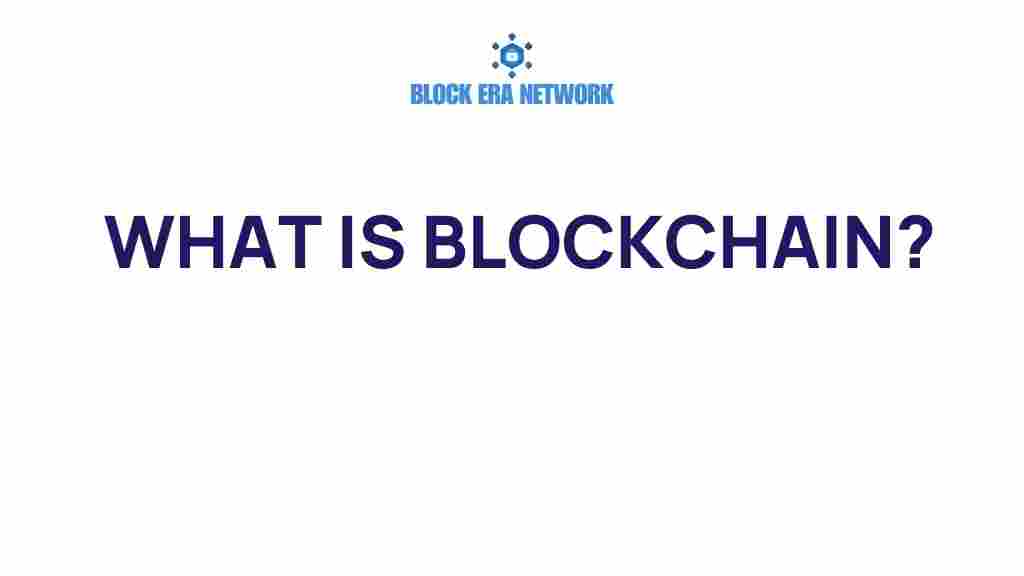What Is Blockchain?
The term blockchain has become a buzzword in recent years, but what does it truly mean? At its core, blockchain is a decentralized, distributed ledger technology that records transactions across multiple computers securely and transparently. Originally designed to support cryptocurrencies like Bitcoin, blockchain has evolved to address a variety of use cases, from supply chain management to healthcare.
In this article, we’ll explore the fundamentals of blockchain, why it matters, and how it is transforming industries globally.
How Blockchain Works
To understand blockchain, it’s important to break down its components:
- Blocks: Each block contains a list of transactions, a timestamp, and a cryptographic hash of the previous block.
- Decentralization: Unlike traditional systems, blockchain operates without a central authority, distributing control across a network of nodes.
- Consensus Mechanism: Transactions are verified through algorithms like Proof of Work (PoW) or Proof of Stake (PoS), ensuring trust and security.
Once a transaction is recorded, it becomes immutable, making the blockchain a reliable and tamper-proof ledger.
Why Blockchain Matters
The significance of blockchain lies in its potential to revolutionize traditional systems by addressing key challenges like inefficiency, fraud, and lack of transparency. Here are some major benefits:
- Security: Blockchain’s cryptographic design makes it highly resistant to hacking and fraud.
- Transparency: Every participant in the network has access to the same information, promoting accountability.
- Cost-Effectiveness: By eliminating intermediaries, blockchain reduces operational costs.
Applications of Blockchain in Various Industries
Blockchain’s versatility enables its adoption across multiple sectors. Here are some real-world applications:
1. Finance and Cryptocurrency
The most well-known application of blockchain is in the financial sector, powering cryptocurrencies like Bitcoin and Ethereum. These digital assets rely on blockchain to facilitate secure and fast transactions without the need for a central bank.
2. Supply Chain Management
Blockchain enhances supply chain transparency by providing real-time tracking of goods from origin to destination. Companies like Walmart and IBM are already leveraging blockchain to improve traceability and reduce fraud.
3. Healthcare
In healthcare, blockchain ensures secure and efficient management of patient records, making data accessible to authorized personnel while maintaining privacy.
4. Real Estate
Blockchain simplifies real estate transactions by enabling smart contracts that automate processes like property transfer and escrow.
Step-by-Step: How to Implement Blockchain
Integrating blockchain into your business can seem daunting. Follow these steps to ensure a successful implementation:
- Identify the Use Case: Determine how blockchain can solve your specific problem or add value.
- Choose the Right Platform: Select a blockchain platform like Ethereum, Hyperledger, or Binance Smart Chain based on your needs.
- Design the Architecture: Decide on the type of blockchain (public, private, or hybrid) and the consensus mechanism.
- Develop and Test: Build your blockchain solution and test its functionality in a controlled environment.
- Deploy and Maintain: Launch the solution and monitor its performance, ensuring regular updates.
Challenges in Adopting Blockchain
While blockchain offers numerous benefits, it also comes with challenges:
- Scalability: Managing large-scale networks can lead to slower transaction speeds.
- Regulatory Issues: Different jurisdictions have varying regulations for blockchain and cryptocurrencies.
- Complexity: Implementing blockchain requires specialized skills and knowledge.
Troubleshooting Common Blockchain Issues
Here are some tips for addressing common problems:
1. Network Latency
Issue: Slow transaction speeds.
Solution: Optimize your consensus mechanism or consider layer-two scaling solutions.
2. Security Vulnerabilities
Issue: Smart contract bugs or attacks.
Solution: Conduct thorough audits and use secure coding practices.
3. Integration Challenges
Issue: Difficulty in integrating blockchain with existing systems.
Solution: Use APIs or middleware solutions for seamless integration.
Conclusion
Blockchain is a groundbreaking technology that is reshaping industries by offering unparalleled security, transparency, and efficiency. Whether you’re a business owner, developer, or curious learner, understanding blockchain’s potential is crucial in today’s digital age.
If you’re ready to explore blockchain’s capabilities, start small, focus on your goals, and continuously adapt as you learn. For more information about blockchain applications and platforms, check out this comprehensive guide.
Ready to dive deeper? Visit our blockchain learning hub for expert tips and insights.
This article is in the category and created by Block Era Network Team
